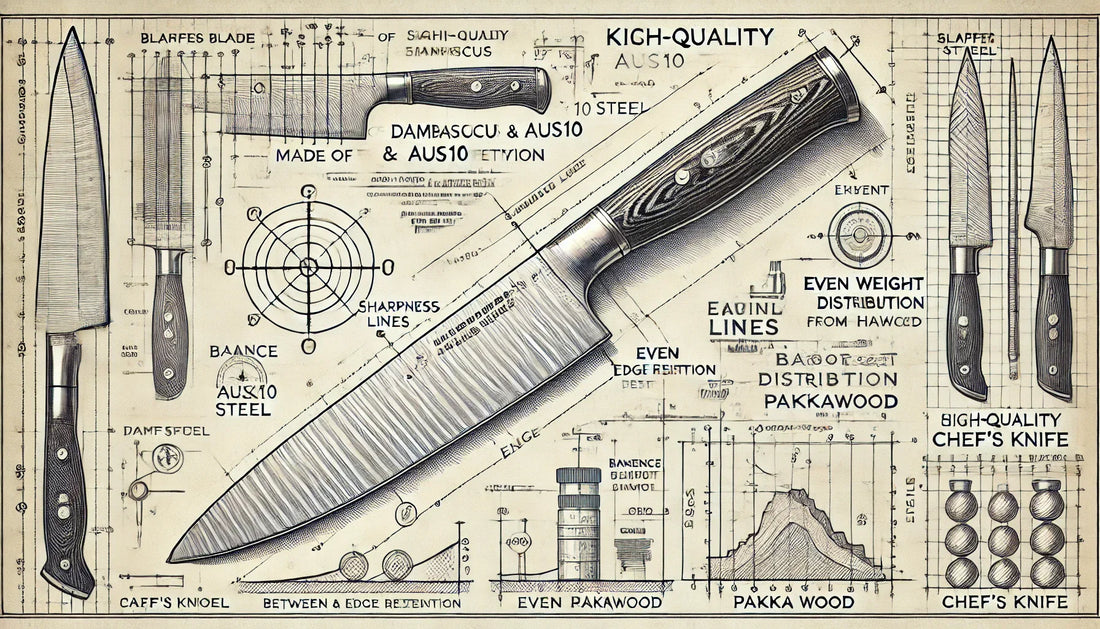
How to Tell If a Knife is High-Quality: A Chef’s Guide
Share
Choosing a high-quality knife is essential for making food prep faster, easier and more enjoyable. After all, who doesn't prefer high quality tools? But with so many options on the market, how can you tell if a knife is truly worth the investment? This guide breaks down what makes a knife high-quality, so you can make an informed choice whether you’re shopping for your first chef’s knife, adding to your collection or picking out the perfect gift for a cooking lover.
1. Blade Material: Steel Matters
A knife’s blade material is one of the most important factors to consider. High-quality knives are typically made from high-carbon stainless steel or Damascus steel, both of which offer excellent sharpness, durability and corrosion resistance.
For instance, Damascus steel is known for its strength and ability to maintain a sharp edge over time. It’s a common material in Japanese knives, like the SEKKIN Chef’s Knife, but more on that later.
2. Sharpness and Edge Retention
A sharp knife is safer and more efficient. One way to test sharpness is by slicing through a piece of paper—if the knife glides through easily, it’s sharp. However, edge retention is what really sets high-quality knives apart. You want a knife that stays sharp with minimal maintenance.
Japanese-style knives, known for their precision and craftsmanship, often feature a sharper blade angle, providing excellent cutting performance. For example, knives made with AUS10 steel hold their edge longer and require less frequent sharpening.
3. Balance and Weight
A well-balanced knife allows you to cut with control and precision. Ideally, the weight of the handle and blade should feel even, so the knife feels like a natural extension of your hand.
When shopping for a knife, it’s important to test how it feels in your hand. Does the weight feel comfortable? Does it allow you to make controlled cuts? This balance is key in professional kitchens but equally valuable for home chefs.
4. Handle Comfort and Materials
A high-quality knife should have a comfortable, ergonomic handle that fits well in your hand. Handle materials like Pakkawood or G10 offer durability, a secure grip and resistance to moisture and wear.
Also, many premium Japanese-style knives feature water buffalo horn or wood inlays for added comfort and style. The right handle ensures your knife remains comfortable even during longer cooking sessions.
5. Forged vs. Stamped Blades
Understanding the difference between forged and stamped knives can help you choose a high-quality knife. Forged knives are created by heating and hammering a piece of steel into shape, resulting in a thicker, stronger blade with better edge retention. Stamped knives, on the other hand, are cut from a sheet of steel and are often lighter and more affordable, but they may not offer the same durability.
A high-quality knife makes all the difference in the kitchen. Whether you’re considering blade material, balance or handle comfort, these factors help ensure your knife is a reliable tool for years to come. For those looking for an all-around performer, the SEKKIN Chef’s Knife exemplifies many of these qualities with its combination of forged Japanese Damascus and AUS10 steel, ergonomic handle and of course a complimentary sheath for additional safety and protection.
